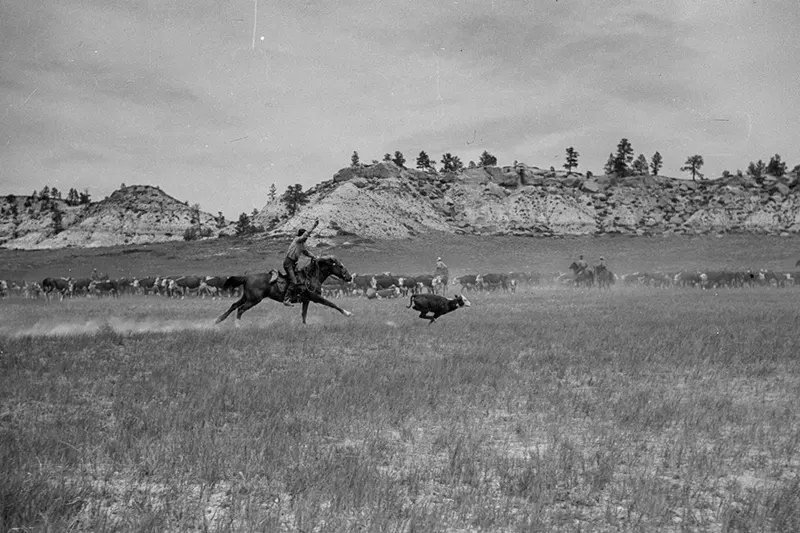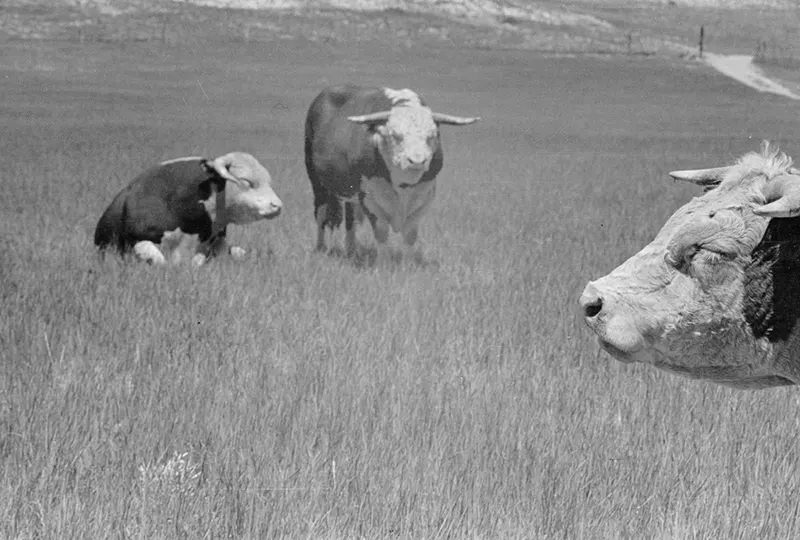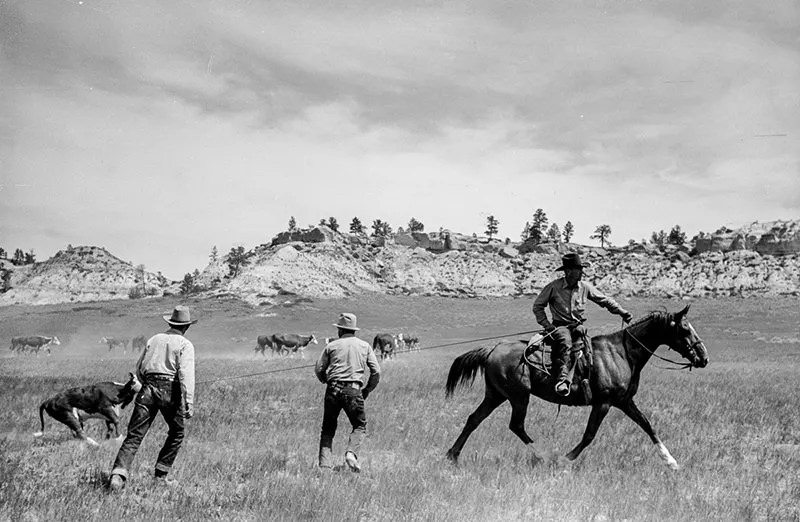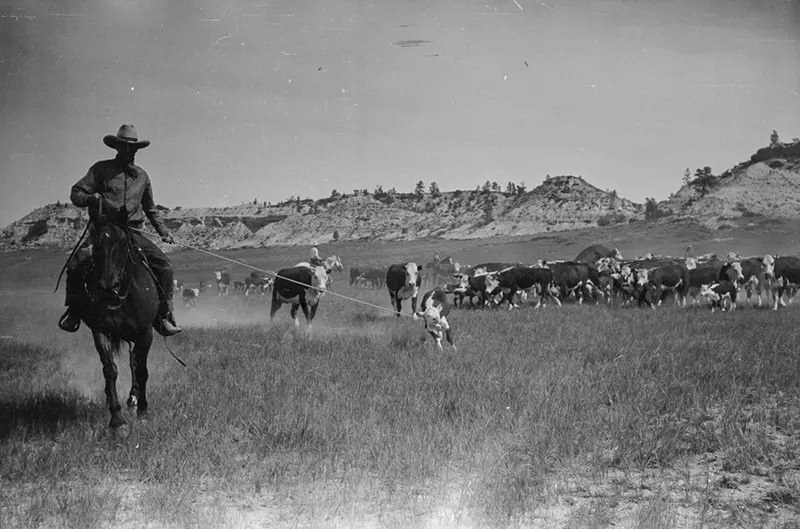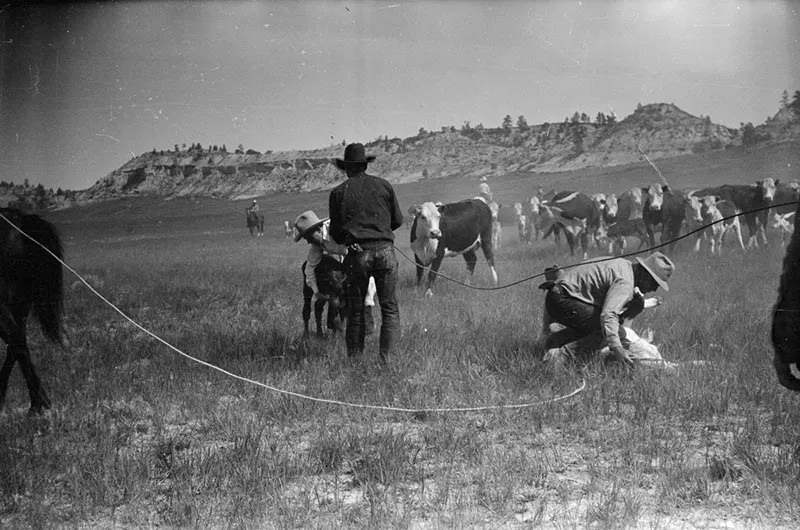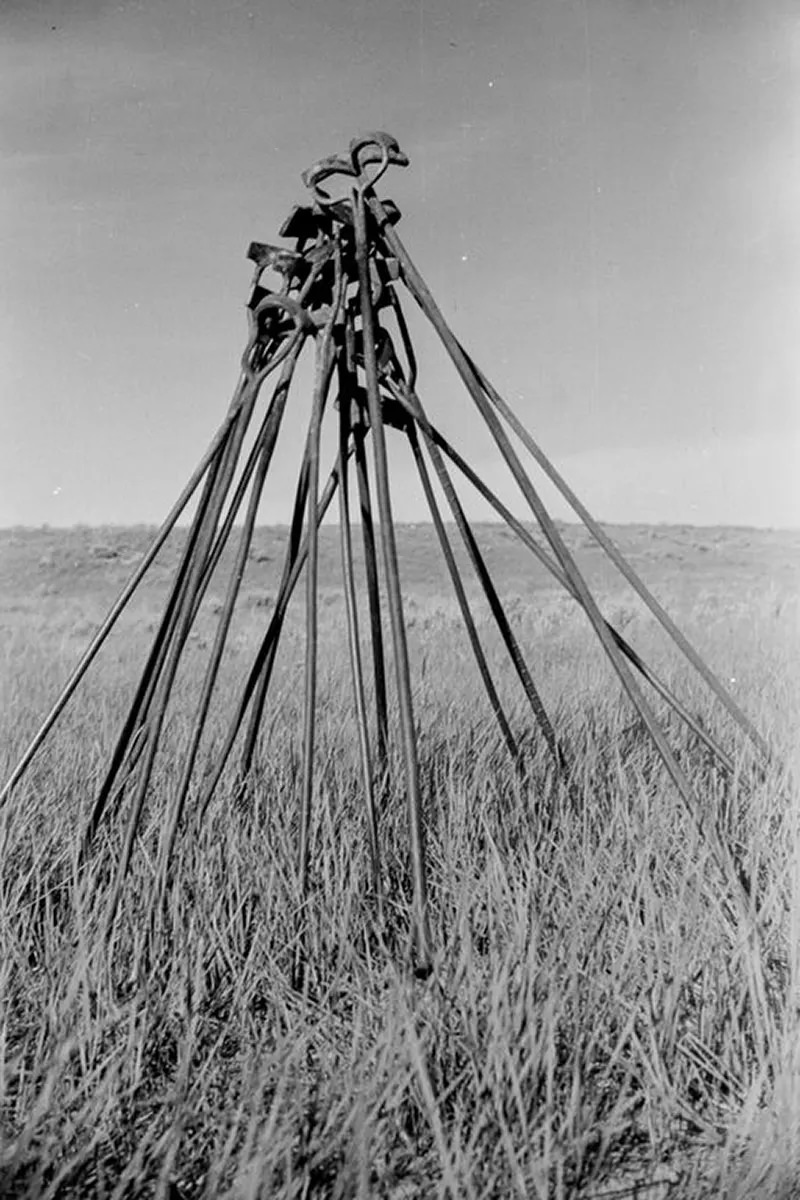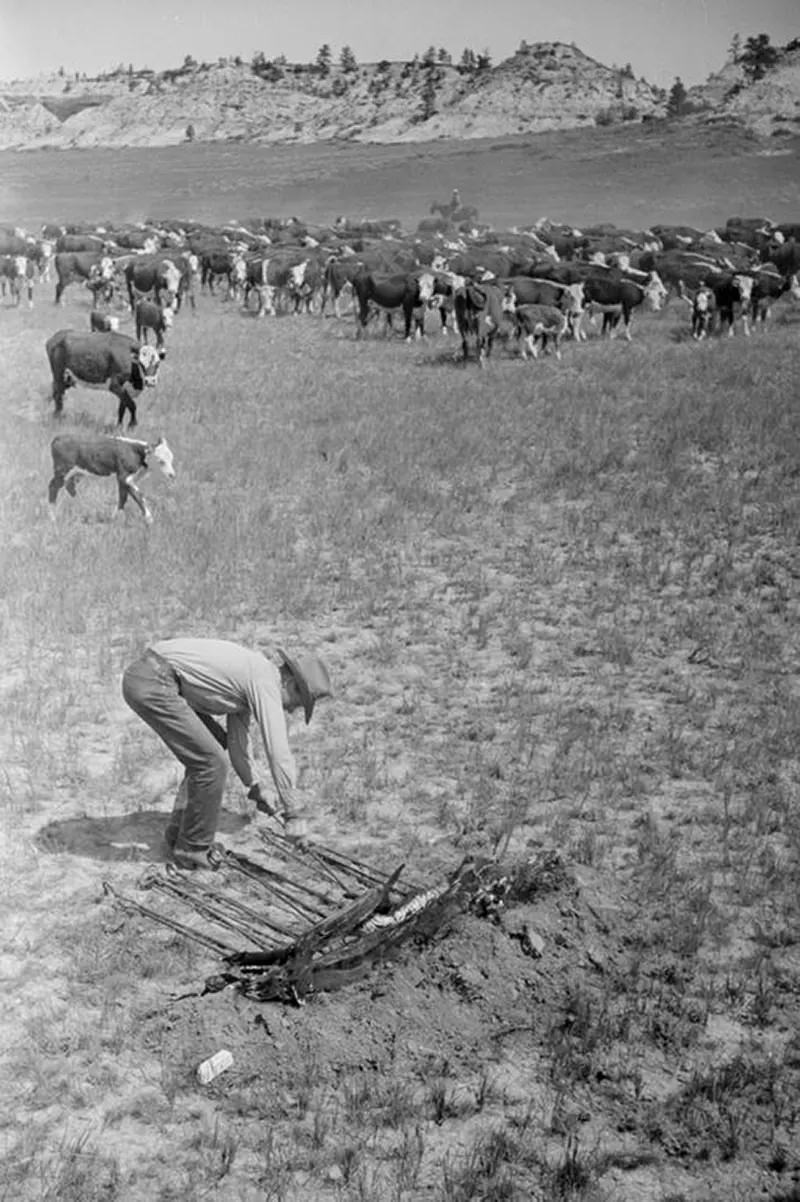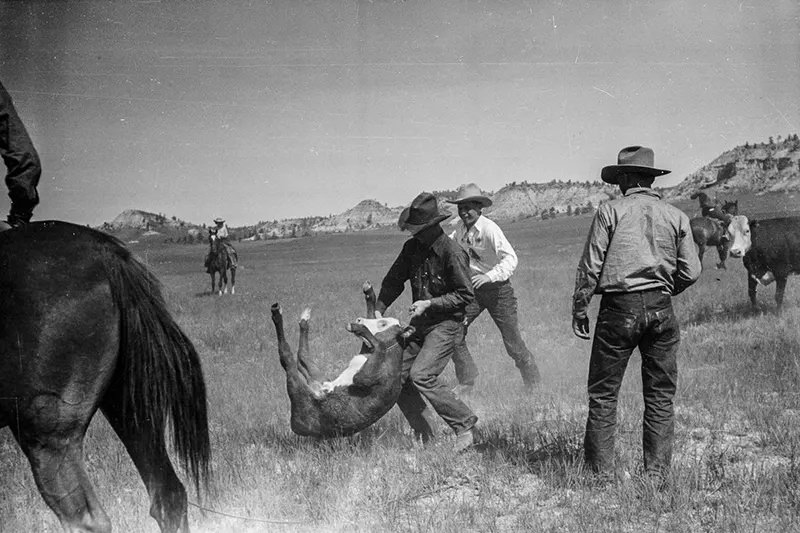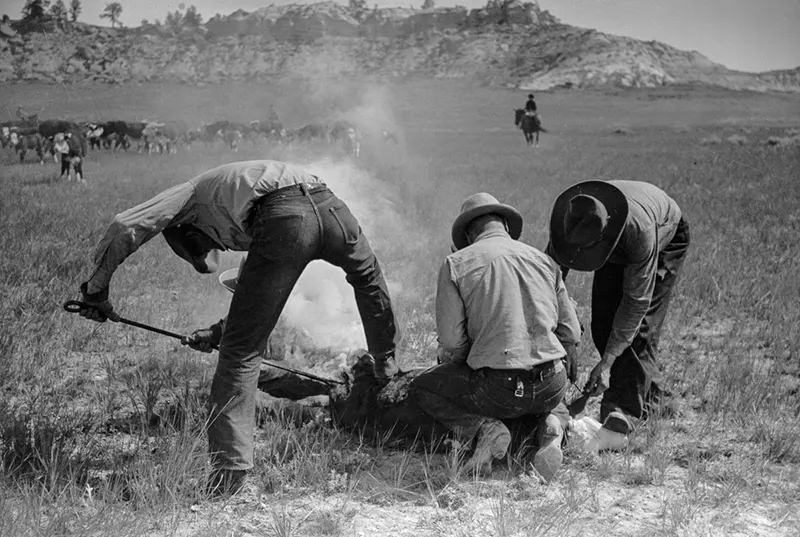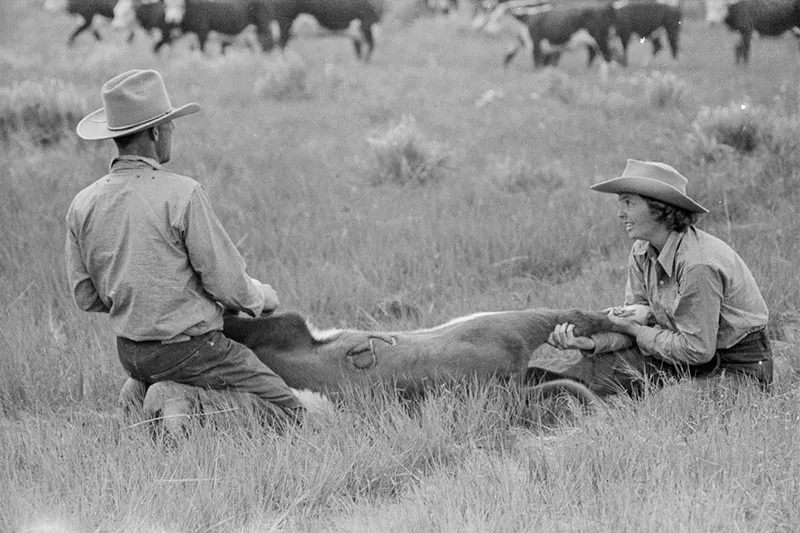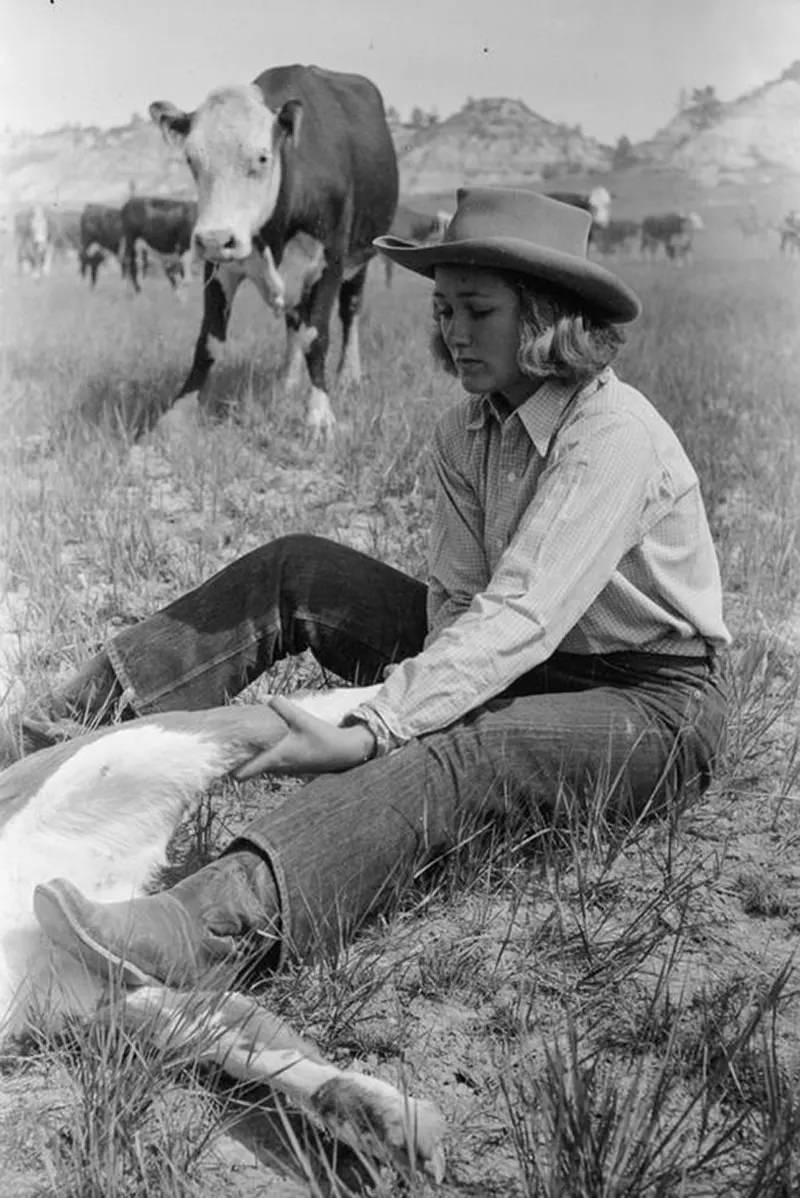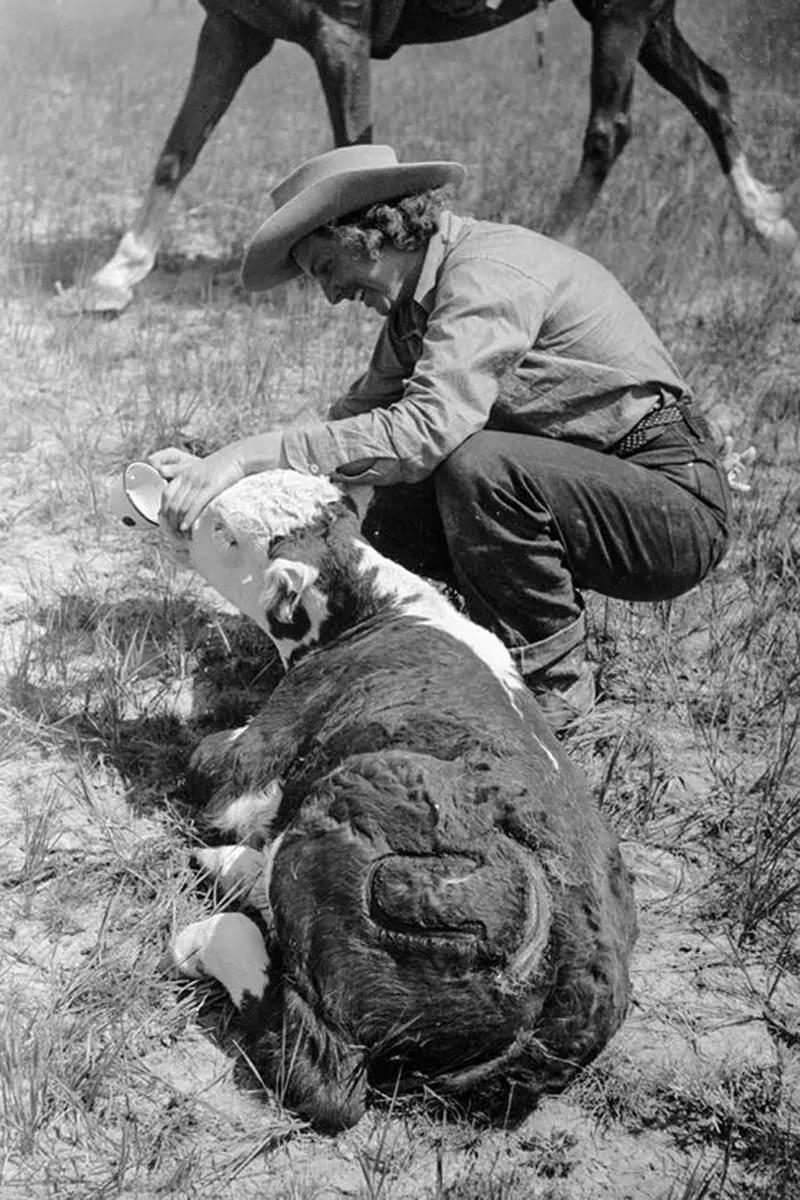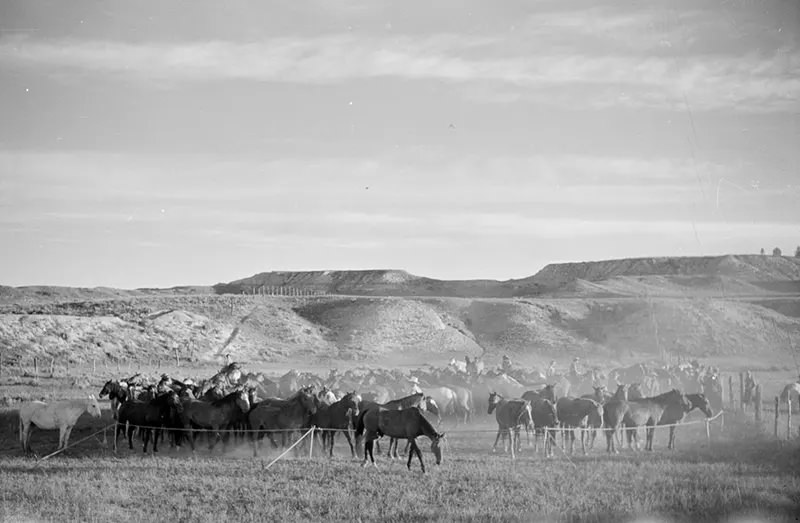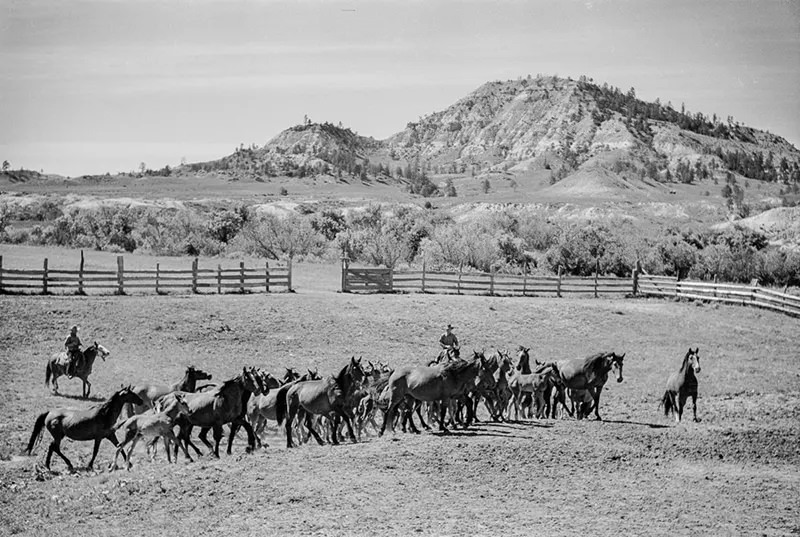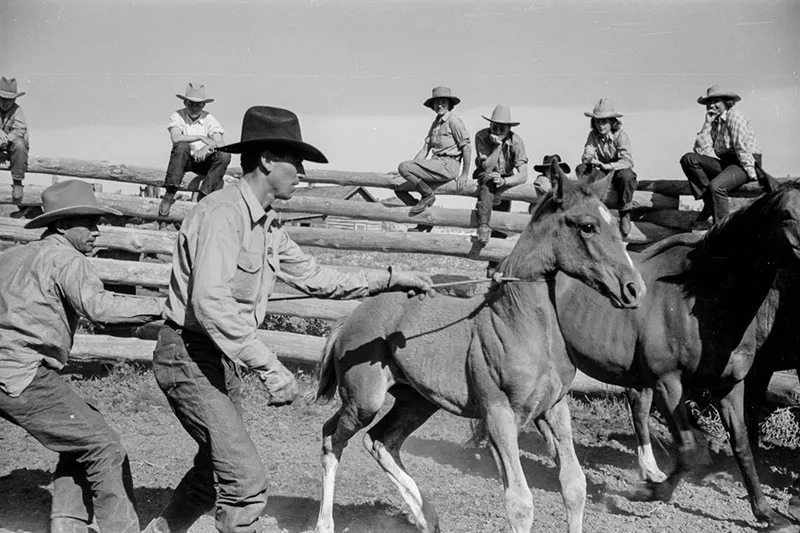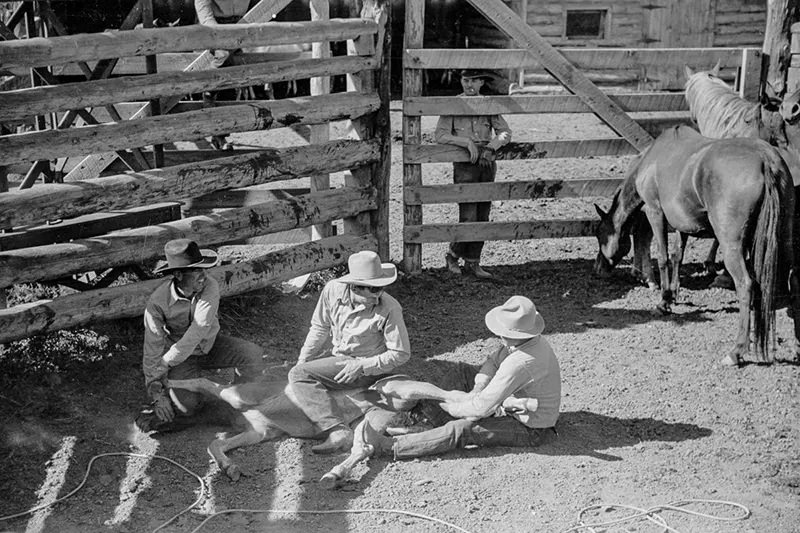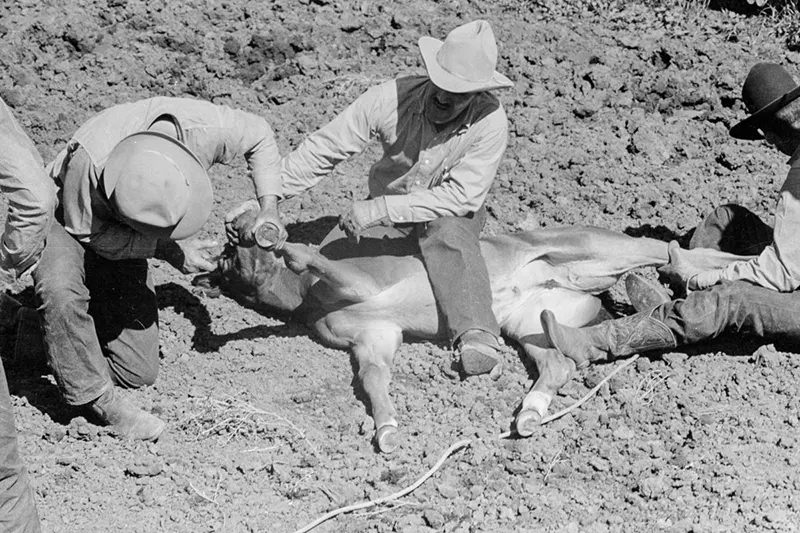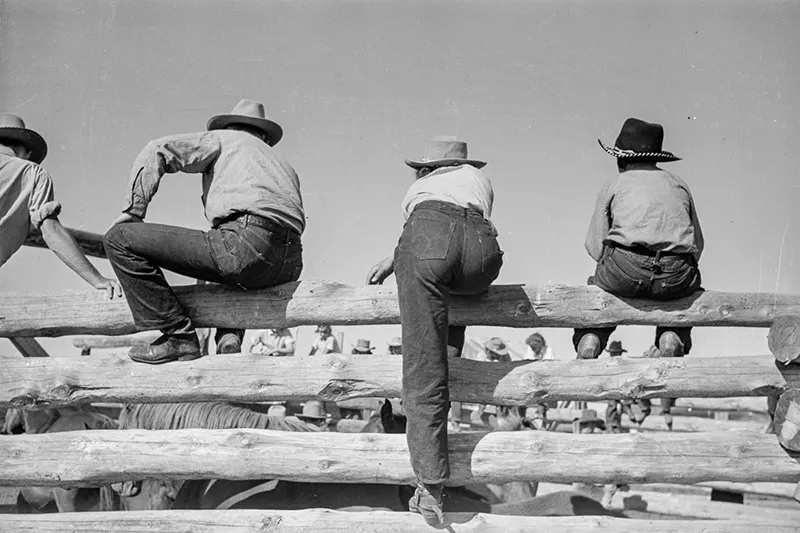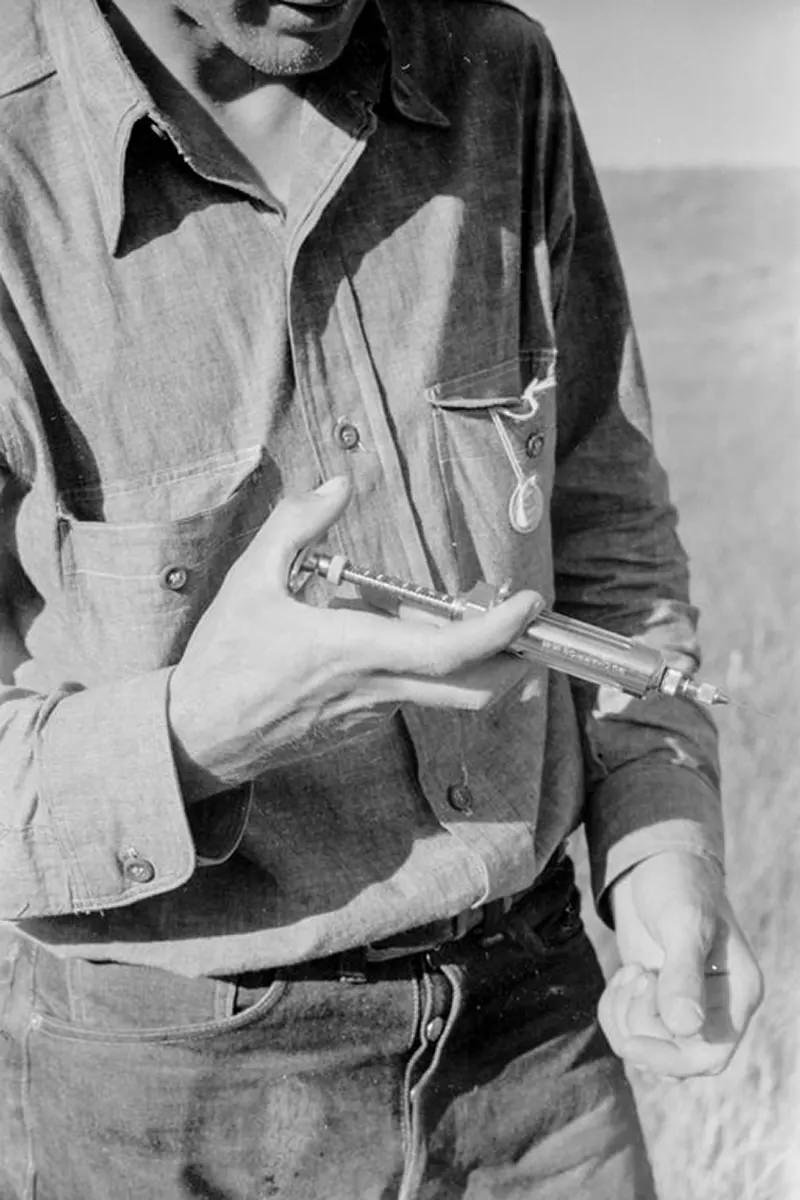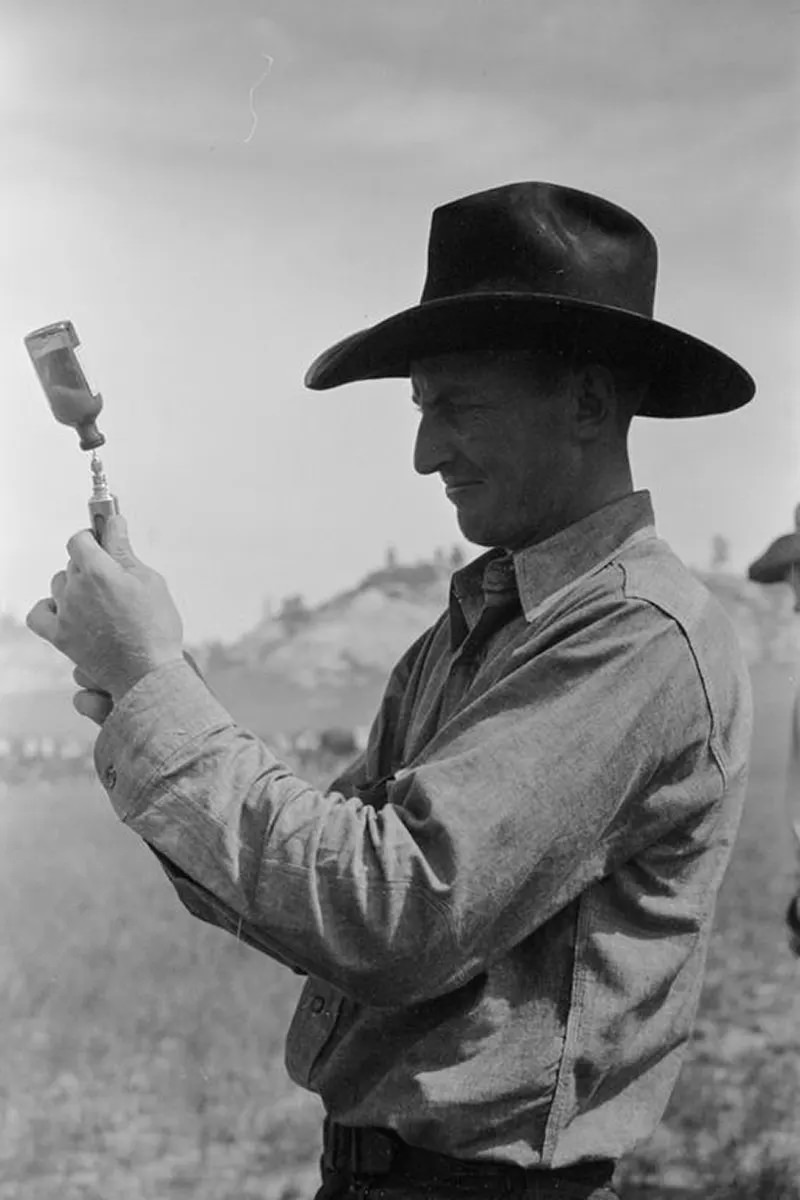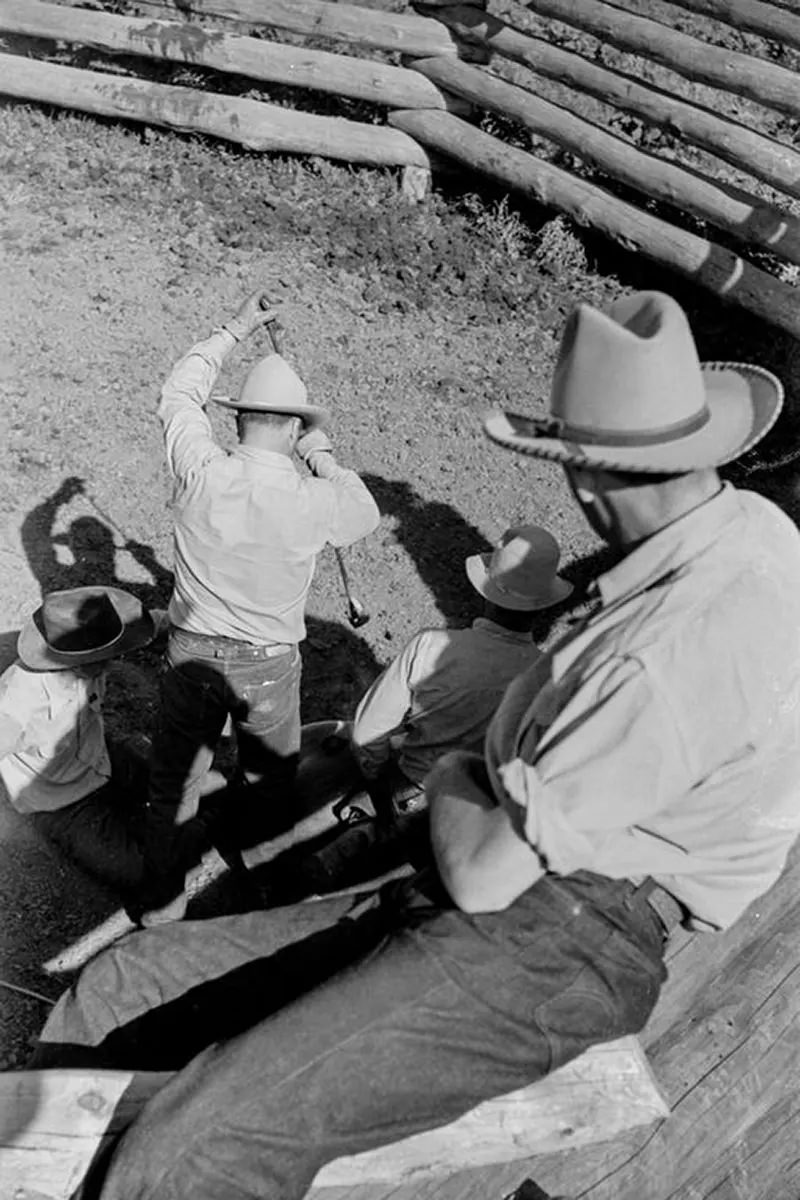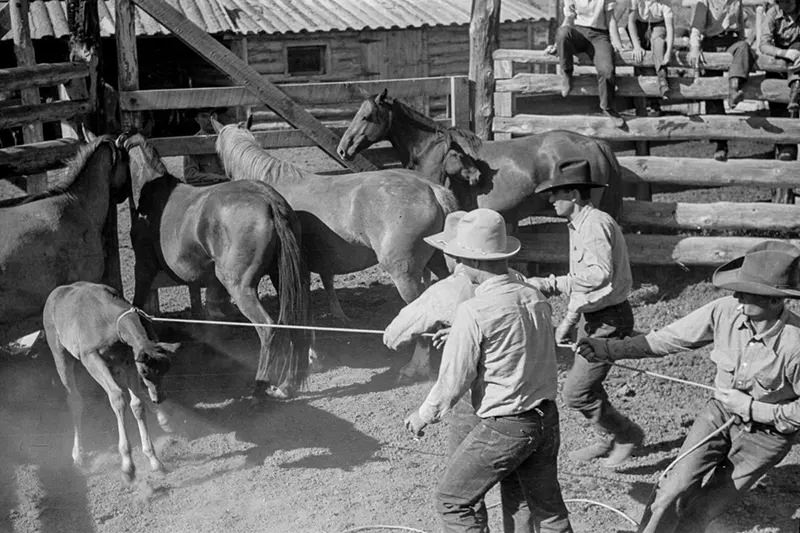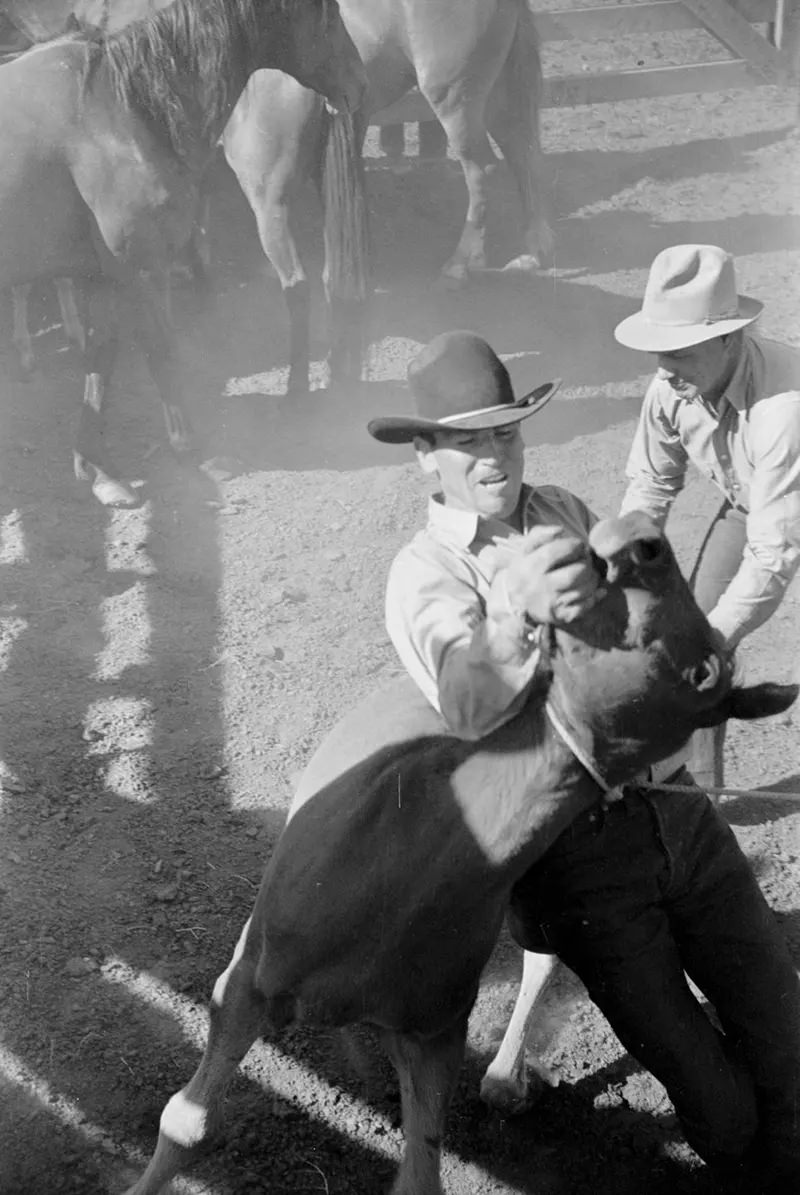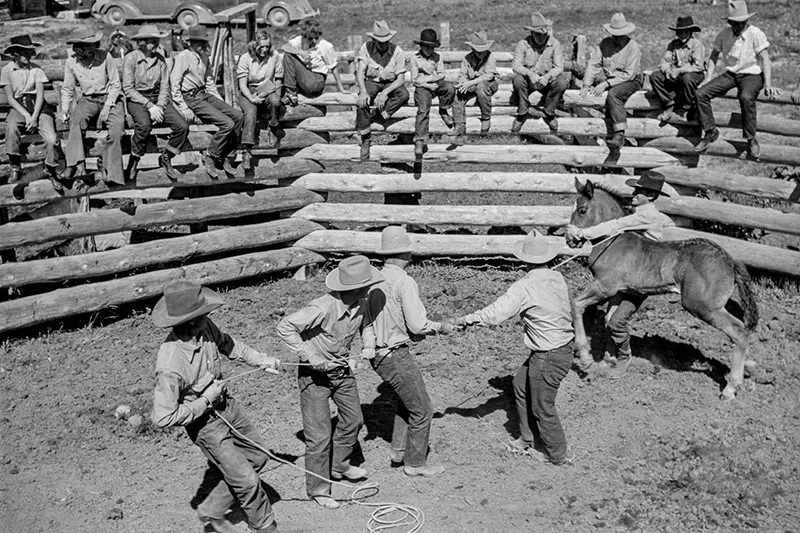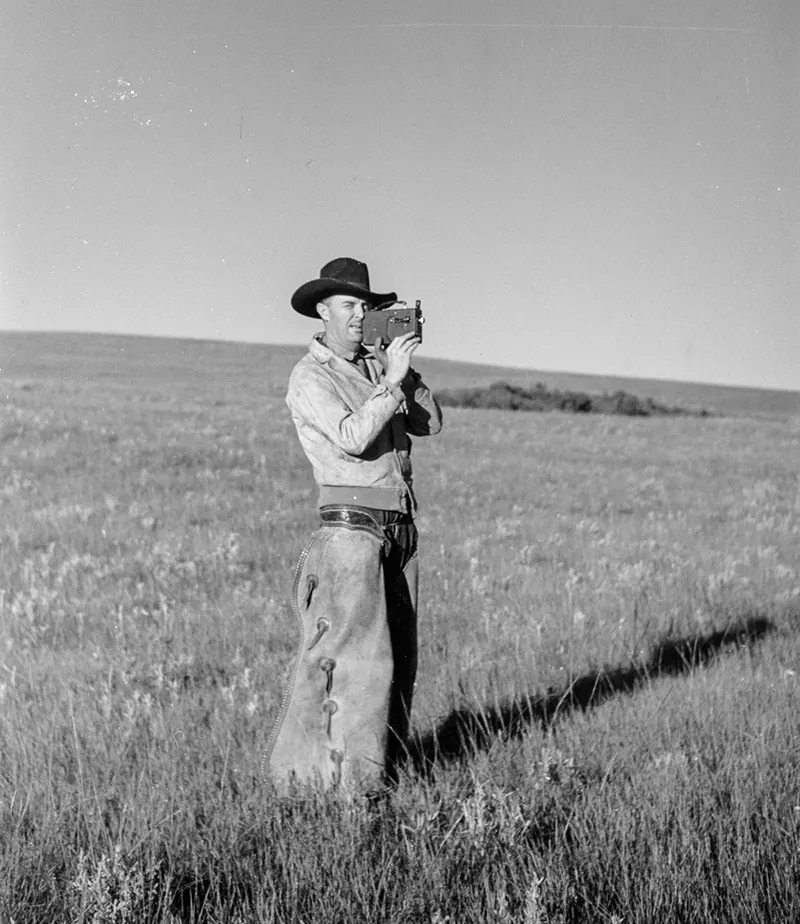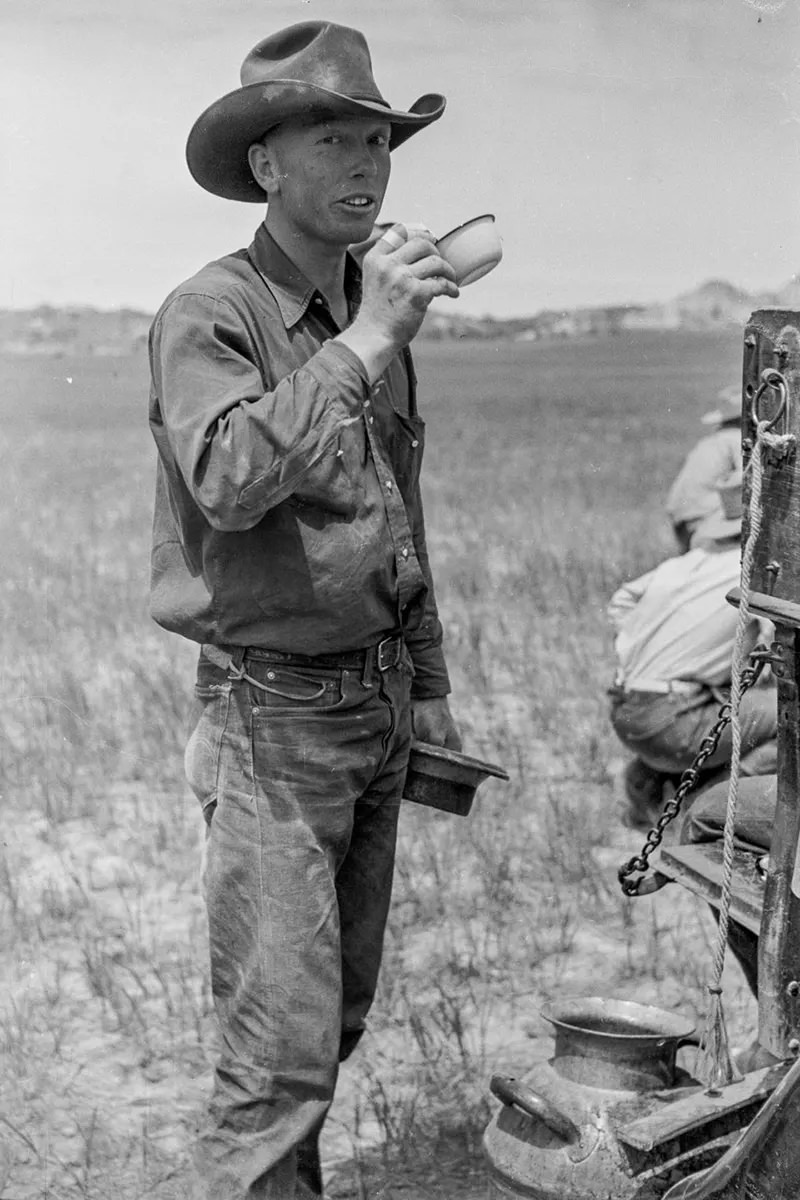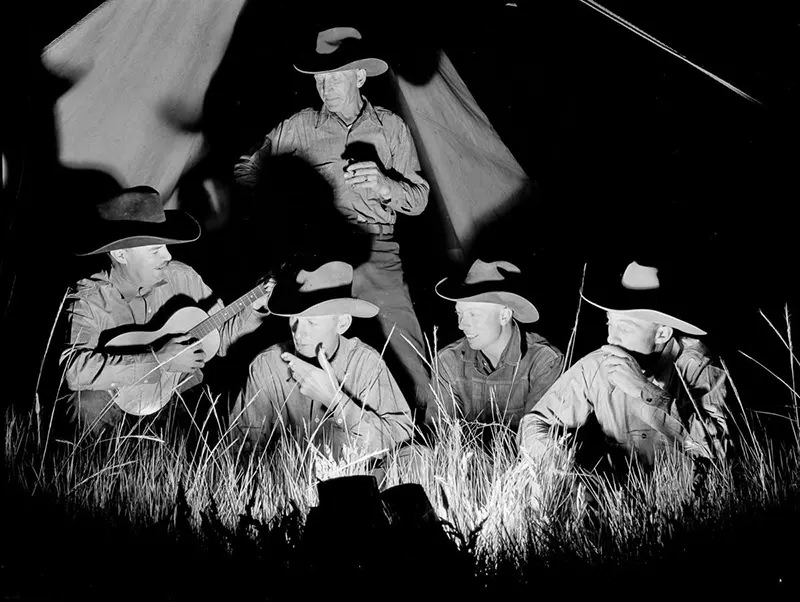Arthur Rothstein captured these photos of cowboys and dudes from the Quarter Circle U Ranch in Big Horn County, Montana, as they rounded up their herds for the season. During roundups, cattle were not moved between rangelands but within specific areas. Roundups were more of a gathering and collecting of all cattle grazing in a particular area. There were two roundups a year, one in the spring and one in the fall. During the spring roundup, cows were branded and counted so a rancher could estimate the number of calves born that year.
Along with branding, cowboys separated market-age steers (called “beeves”) for sale. During the fall roundups, steers were primarily selected for shipment to meat packing plants based on their readiness to ship. The time it took to complete a roundup varied depending on the amount of land the cowboys had to ride to find all the cattle.
Both cowboys and horses must possess several specialized skills to perform a roundup. Cattle separators needed the highest level of skill and specialized horses trained to follow cattle movements, capable of stopping and turning faster than other horses. As soon as cattle were sorted, cowboys roped young calves, restrained them, and branded or castrated them (in the case of most bull calves). Occasionally, older cattle had to be restrained for branding or other treatments. There were a lot of horses needed for the roundup. A cowboy would need three to four fresh horses during a day’s work. The horses themselves were also rounded up. Young foals in the west were commonly born to tame mares but allowed to grow up “wild” in a semi-feral state on the open range. Often called mustangs, there were also “wild” herds. Cowboys that specialized in training horses rounded up both types and tamed them. A process is known as “bronco-busting” or “bronc busting.”
During the late 19th century, American cowboys emerged from Mexican vaqueros traditions to become legends and heroes. Wranglers are specifically responsible for tending the horses used to work cattle. Besides ranch work, some cowboys participate in rodeos. In modern American society, cowgirls carry out identical tasks as they did in the 19th century. Still, their historical role is less well-documented, but their achievements have won them considerable respect. A cowboy’s roots can be traced back to Spain and the earliest European settlers in the Americas. Throughout history, equipment, clothing, and animal handling have evolved according to terrain and climate differences, as well as the influence of cattle-handling traditions from various cultures.


